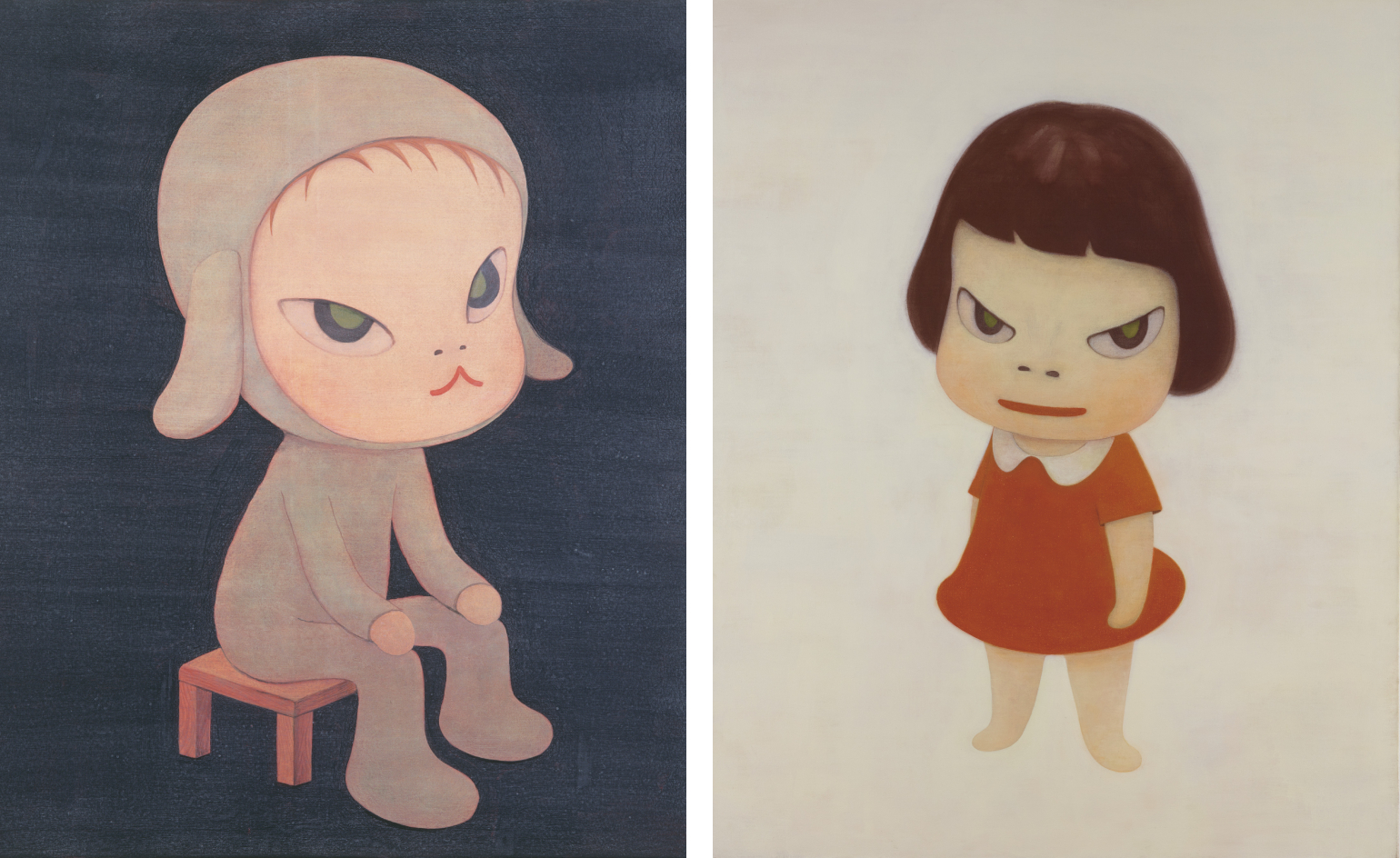
What lies behind the operatic gaze of Yoshitomo Nara’s singular wide-eyed, large-headed children? Appearing melancholic, at times defiant, there seems to exist a profound sense of nostalgia and familiarity within the Japanese artist’s allegorical iconography, which reveals more about his inner world than initially meets the eye. Honest memories of his childhood, radical coming-of-age experiences and a curious outlook in the realms of music, art and popular culture are just a few of the things that make Nara’s universe not so much esoteric but inviting. Above all, it’s his raw portrayal of the human condition – beautiful, frail and, at times, bewildering – that renders his creations so hypnotising.
‘Yoshitomo Nara’ at the Guggenheim Bilbao Museum
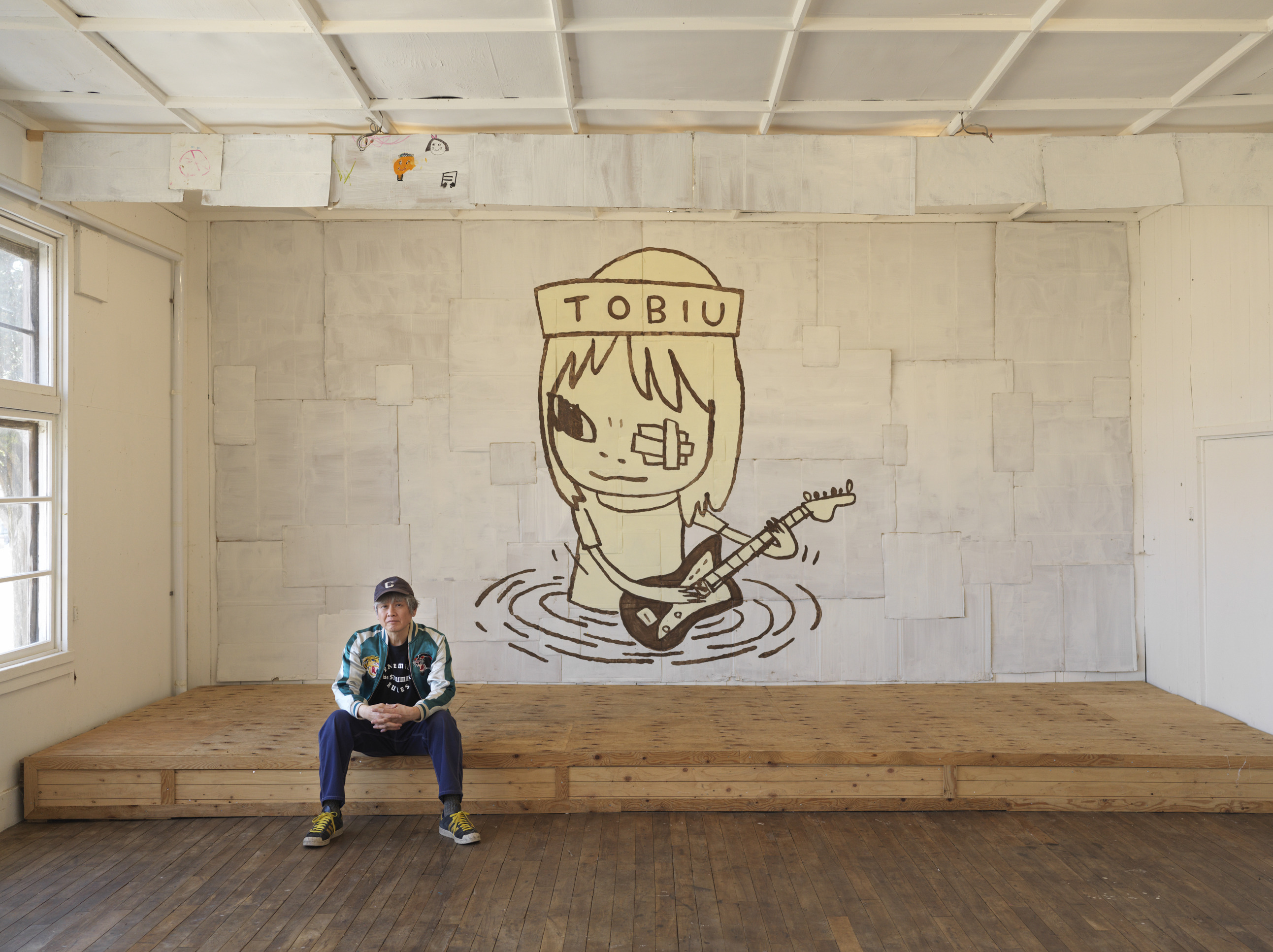
For the first time in Spain and in a prominent European museum, a major solo exhibition of Nara’s work is currently on display at the Guggenheim Bilbao (until 3 November 2024). Titled ‘Yoshitomo Nara’, the retrospective, sponsored by the BBVA Foundation and curated by Lucía Agirre, reveals and explores the intriguing world of the artist through a diverse array of artworks, including paintings, drawings, sculptures and installations that span the past four decades (1984-2024). Nara’s conceptual and formal processes come to the forefront through a room display that adheres to his exact specifications, alongside a 25-song soundtrack with personal picks inspired by his trips to Europe in the 1980s.
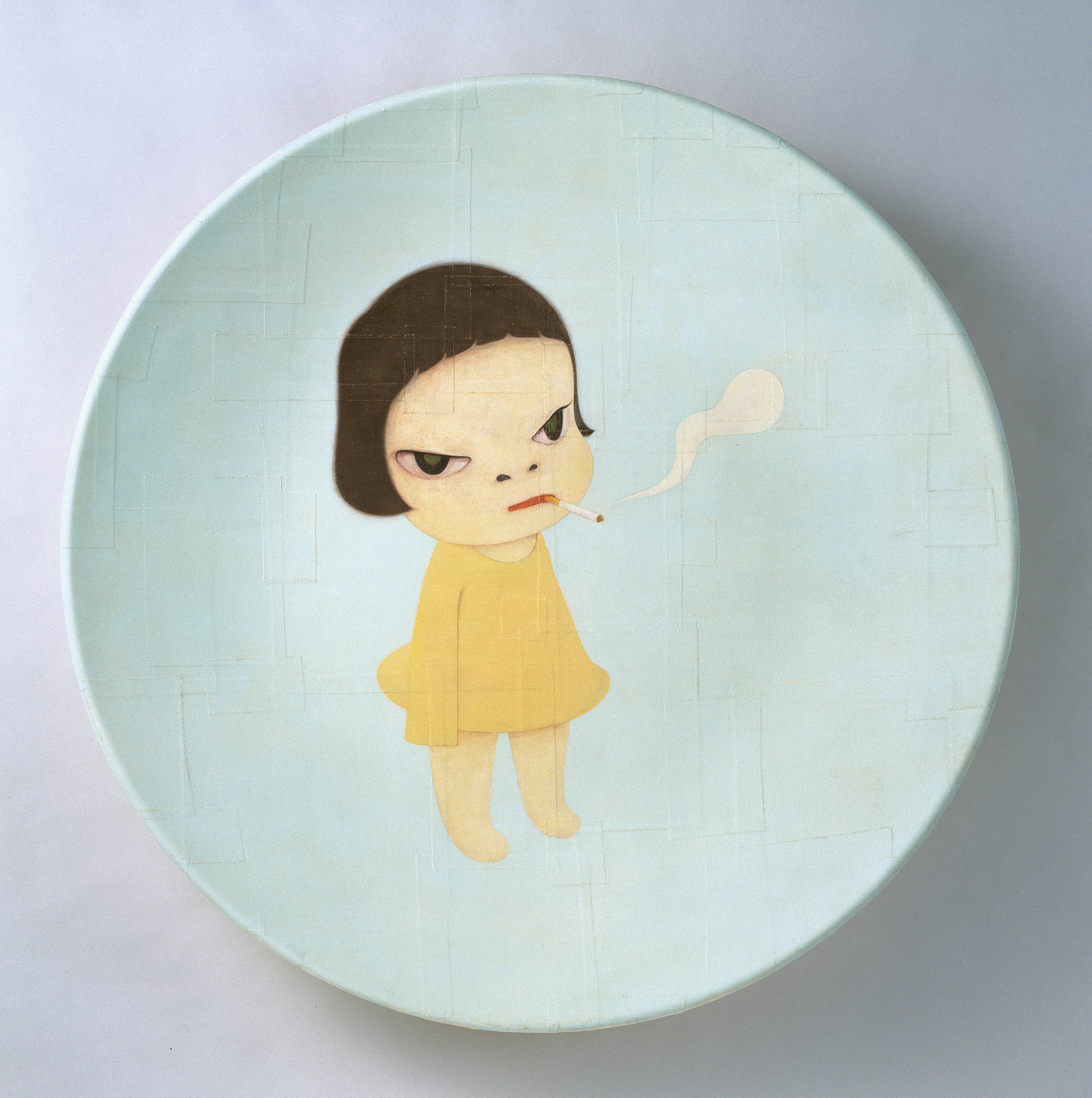
Rather than being arranged chronologically, the works at ‘Yoshitomo Nara’ revolve around the artist’s use of technique and materials, offering insight into his creative process, which typically commences without a predetermined concept, responding organically to the characteristics of the canvas material, which can range from cardboard to ceramics.
Within the first room, a mixed-media installation is titled My Drawing Room (2008), a dollhouse-like structure filled with objects that have deeply influenced the artist, symbolising his curious nature. The house motif recurs throughout Nara’s body of work, particularly in the 1980s, where triangular-roofed structures harken back to the single-story dwelling of his childhood.
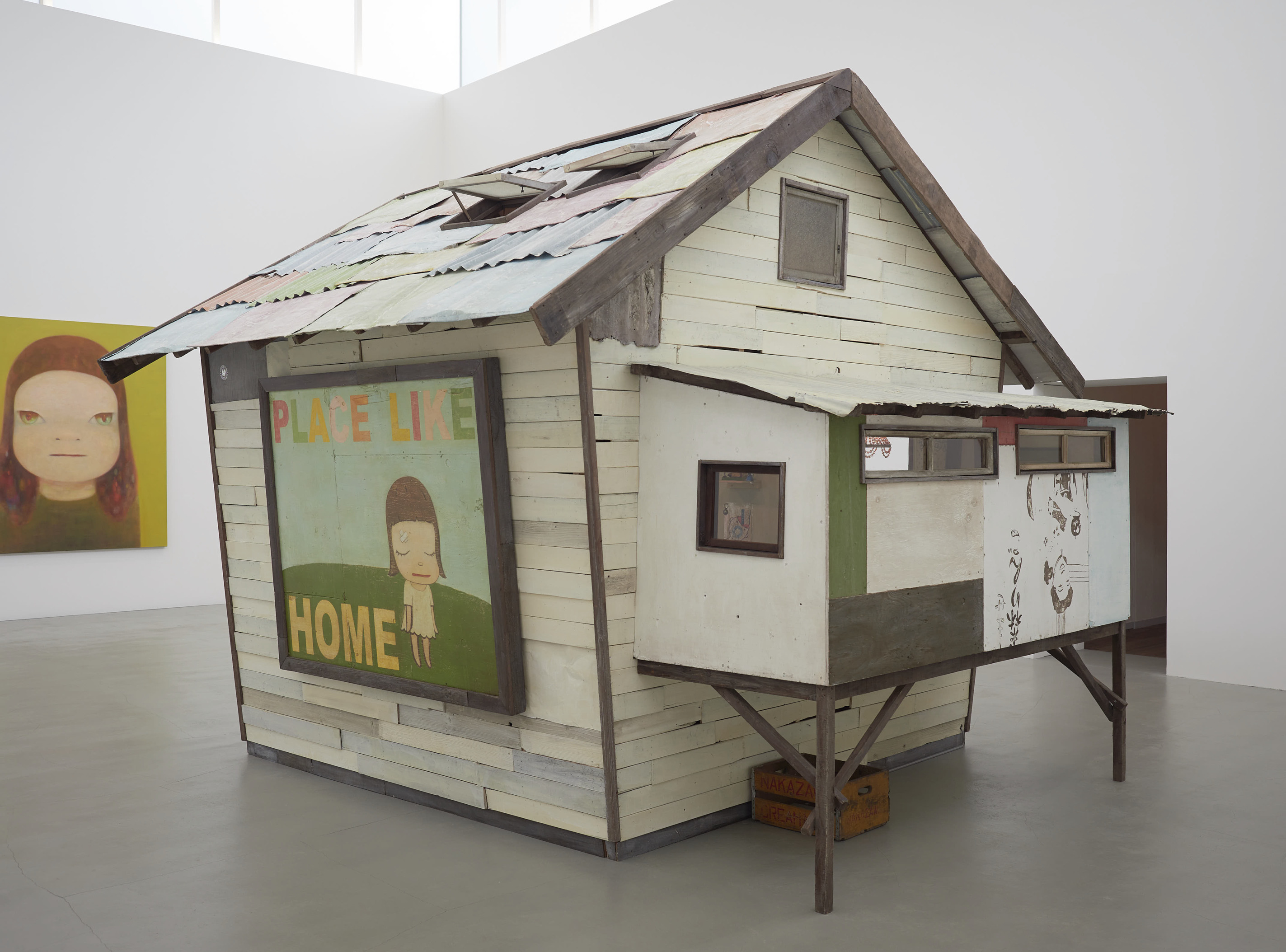
It’s also in this inaugural space of the exhibition where visitors can connect with Nara’s animal friends, such as his characteristic white dog with floppy ears; reimagined as an abstract papier-mâché sculpture in Pray (1991). Meanwhile, Nara’s deep-seated passion for music permeates the entire showcase. With a childhood characterised by solitude, Nara’s connection to music took root when, at the age of 11, he began tuning into radio broadcasts from a nearby US airbase, introducing him to international singer-songwriters whose music resonated with him on a sensory, non-verbal level.
Throughout his artistic journey, song lyrics have served as a conduit for understanding diverse cultures, as seen in his allusions to John Hiatt’s Overcoats album cover from 1975 through recurrent puddles symbology, evident in In the Deepest Puddle II (1995), or in his series of reinterpretations of The Ramones as canine figures, perfectly seen in Joey (2008).
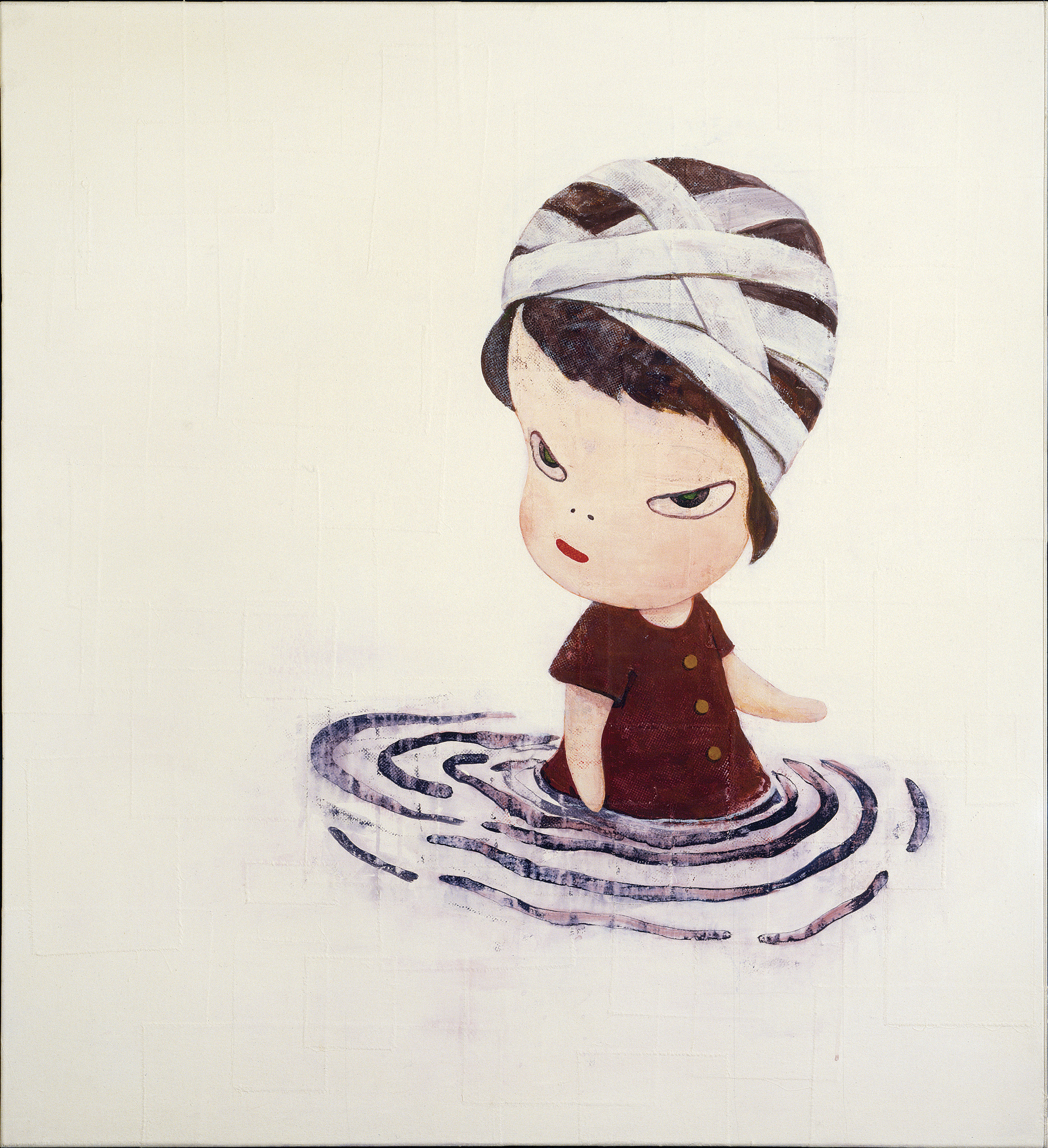
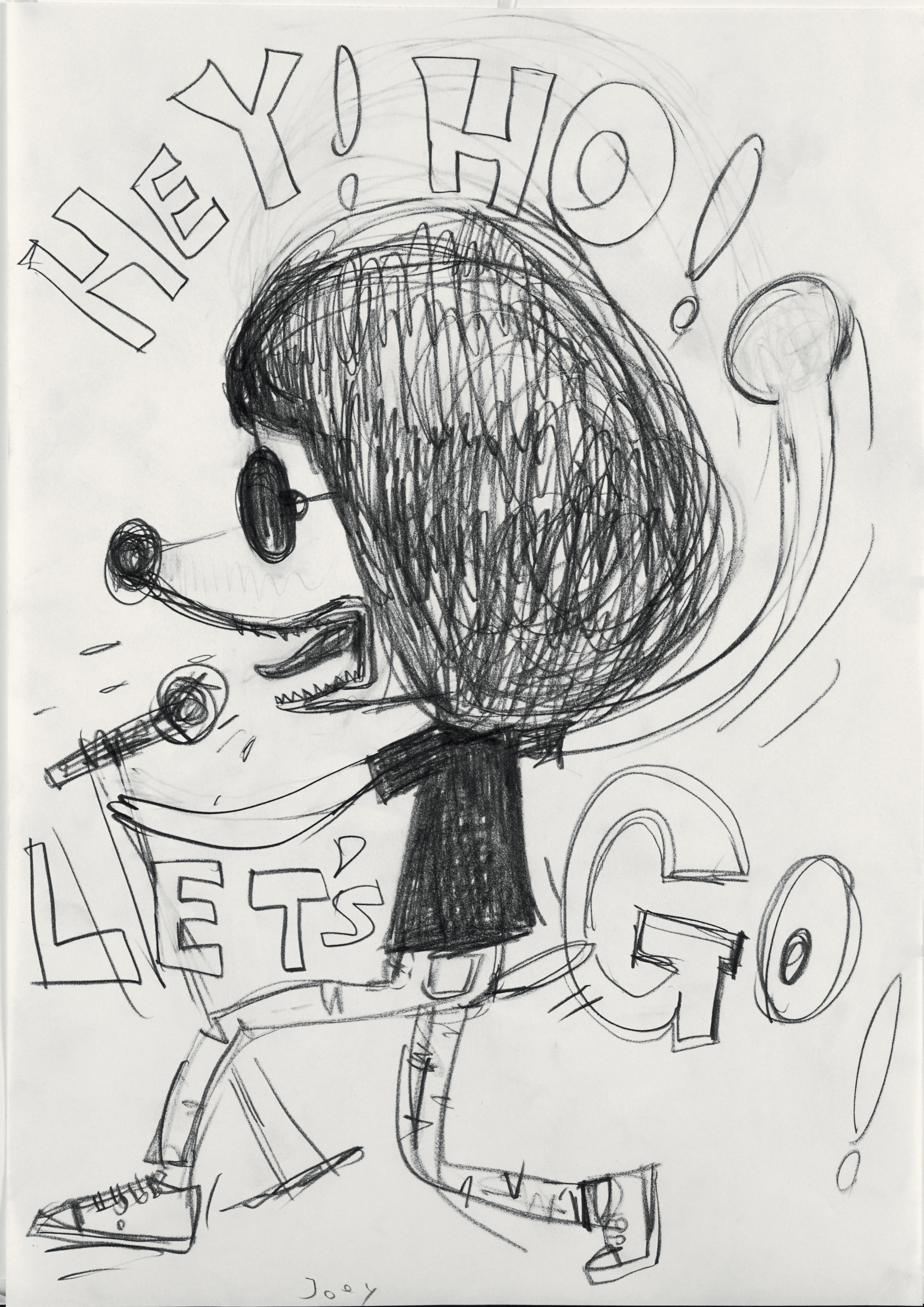
Nara’s cherished children’s figures are scattered around the exhibition, some peering over walls while others meet your gaze directly at eye level. Over his career, the evolution of his artistic style becomes apparent in the eyes of these endearing characters. Initially, in works like Ships in Girl (1992), the eyes appeared flat and roughly outlined in black, gradually transforming into an otherworldly depth, a shift influenced by his time at Kunstakademie Düsseldorf under the tutelage of AR Penck.
‘After coming to Germany, I stopped being concerned with how others might interpret my work and began to paint only what held personal significance for me,’ remembers the artist in an autobiographical essay. Consequently, his gender-ambiguous characters leap from the canvas against flat backgrounds and through glistening pops of colour, as showcased in pieces like Blankey (2012) or Midnight Tears (2023).
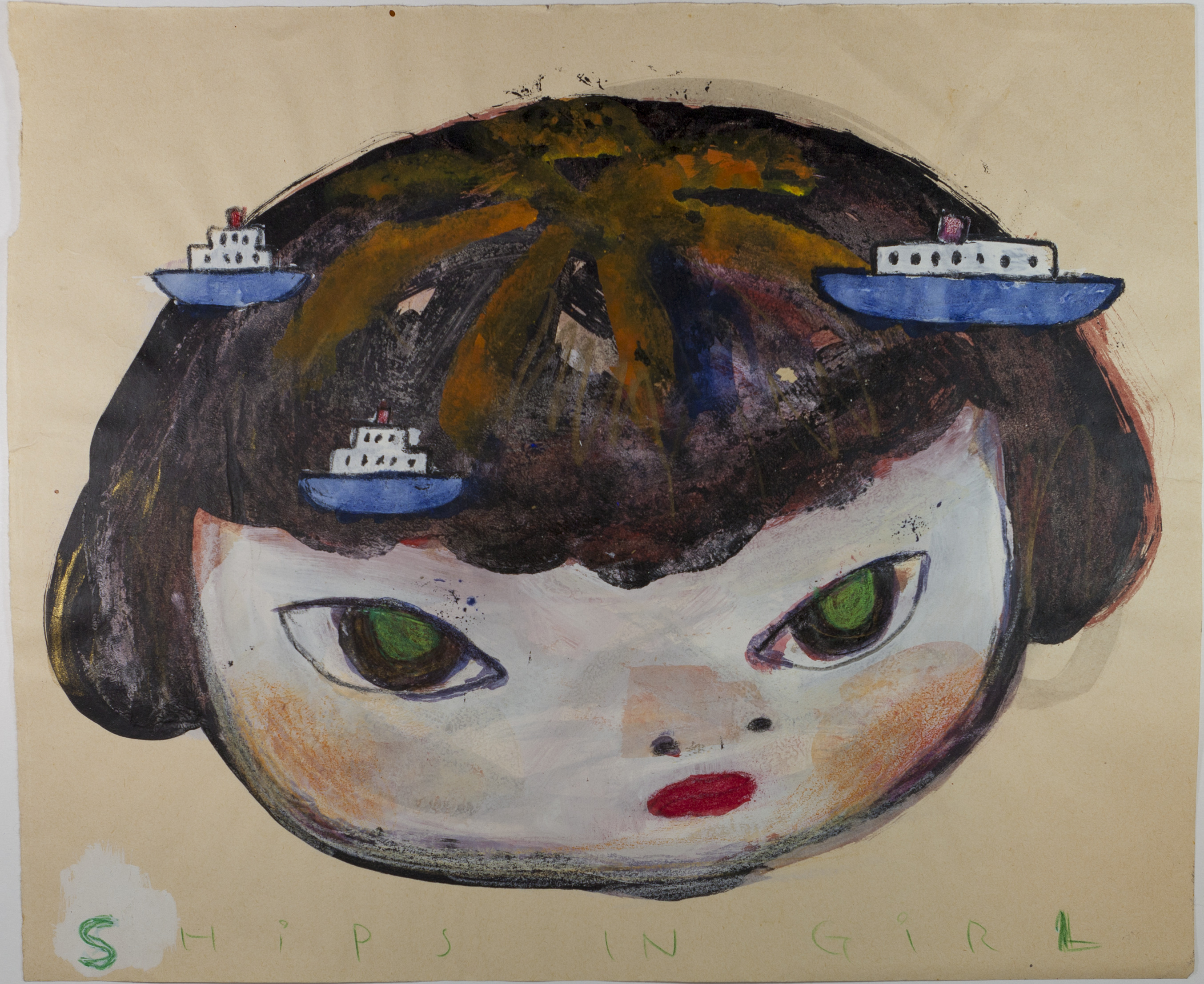
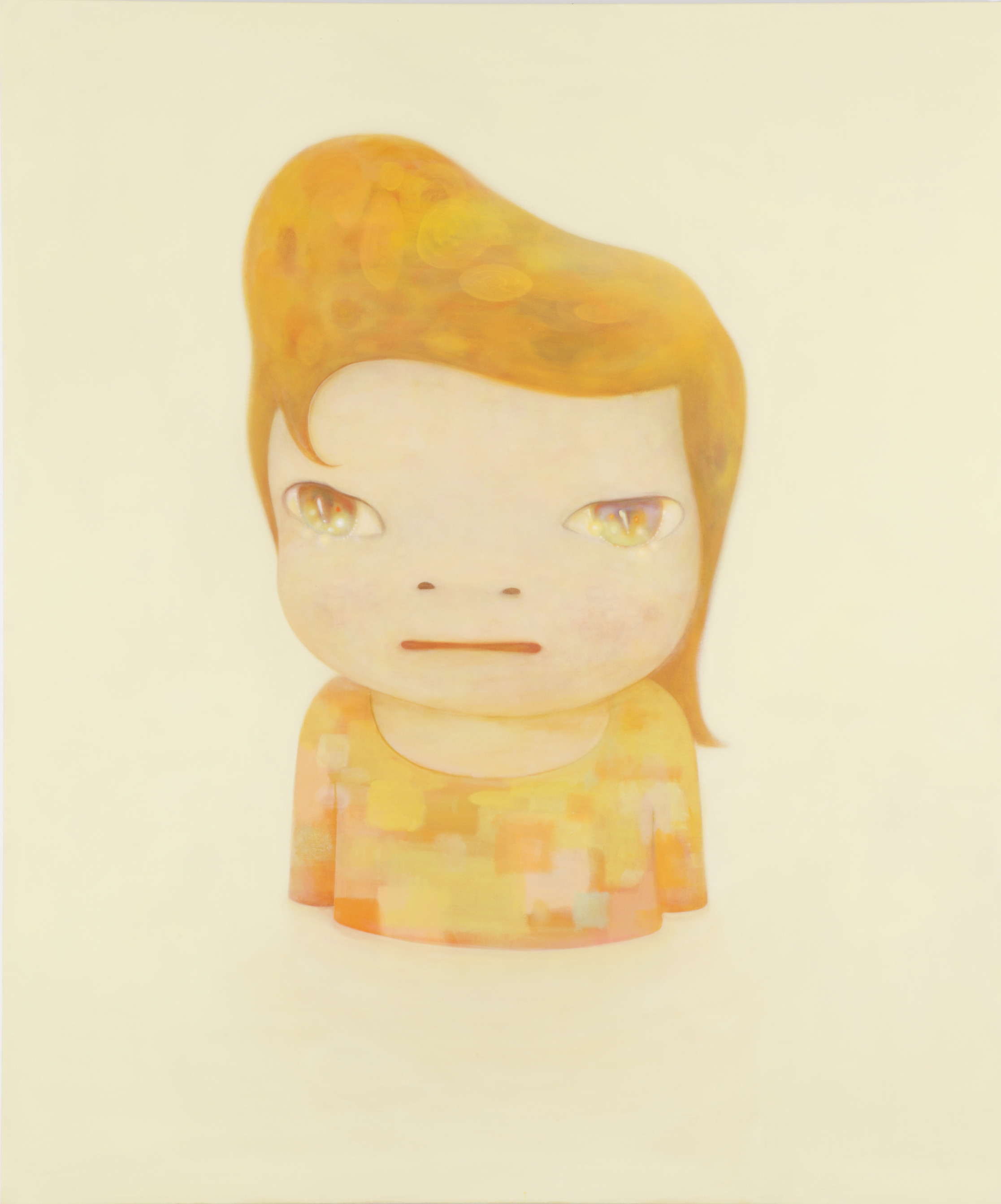
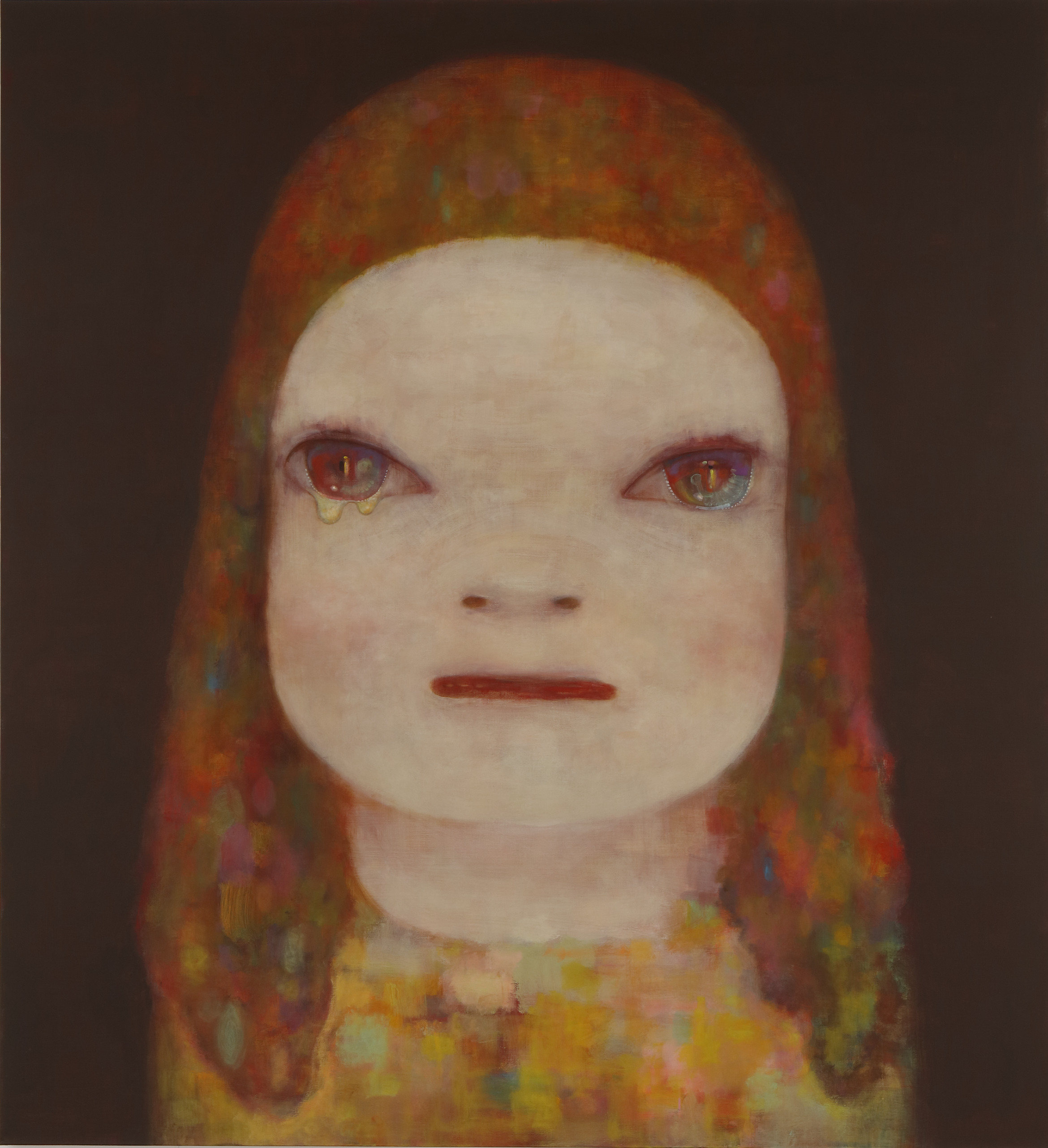
After spending 12 years in Germany, Nara chose to return to Japan in 2000. In 2011, the artist confronted the catastrophic aftermath of the Great East Japan earthquake, the ensuing tsunami, and the nuclear crisis at the Fukushima Daiichi power plant. These events catalyzed a profound shift in his art towards a socio-political dimension, prompting him to reassess his role as an artist and confront the collective loss and suffering experienced by the affected communities.
Nara’s piece No Nukes (1998) stands as an early testament to his vehement opposition to nuclear armament. Released without royalties, this artwork became a symbol of protest against nuclear power in Tokyo in 2012. More recent works like From the Bomb Shelter (2017) continue to illustrate Nara’s ongoing advocacy of peace in contemporary society.
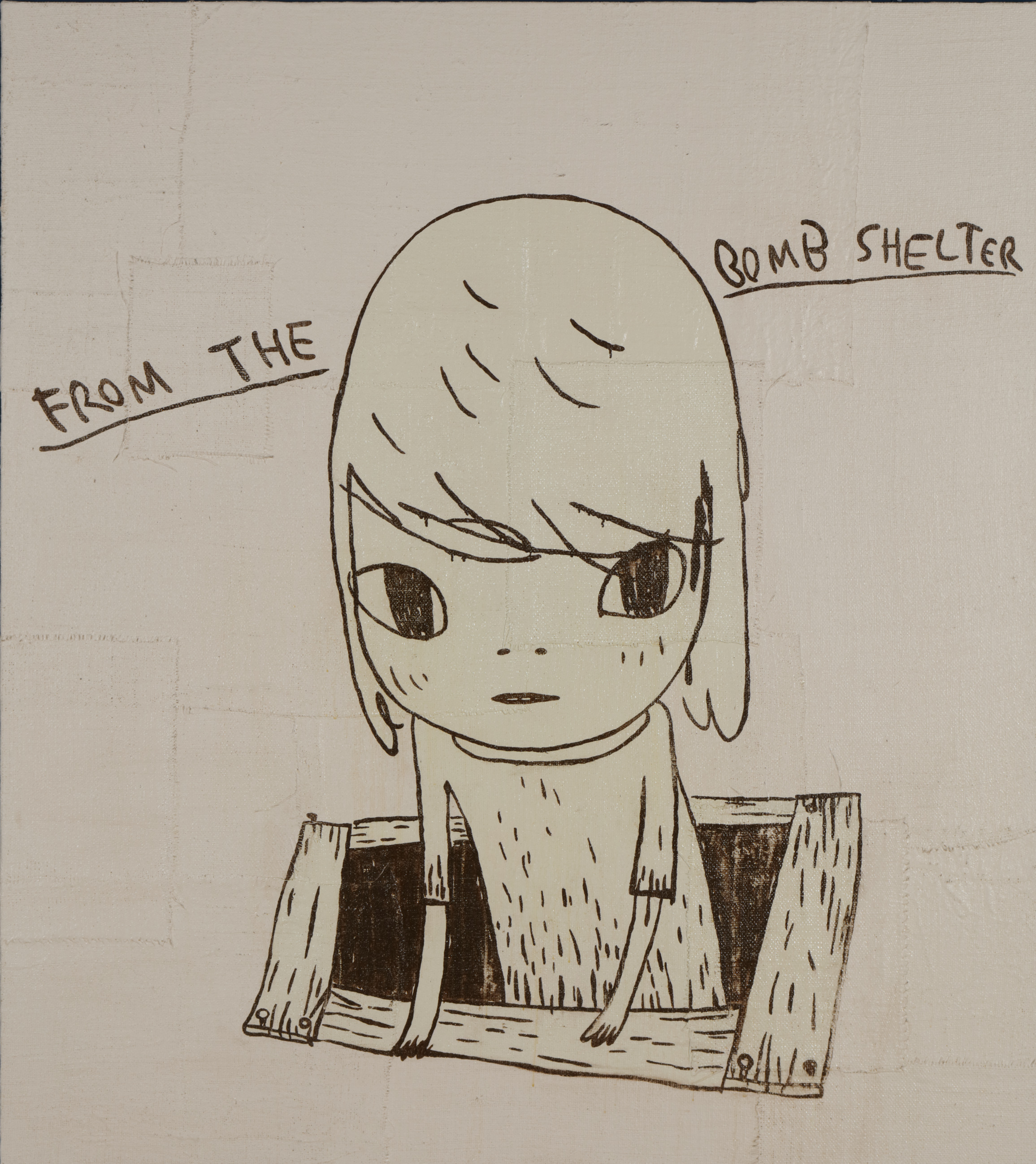
Our highlights of the exhibition
For Wallpaper*, the showstopping moment of the exhibition is Fountain of Life (2001/2014/2022), a sculpture akin to a celestial fountain, where tears cascade silently from the eyes of children; their overlapping heads symbolising a poignant unity. Nara’s spiritual essence, less explored in previous works, emerges, whispering messages of optimism and faith.
Miss Forest (2010), resembling a slumbering woodland entity, draws upon Shinto faith, followed by Nara’s familial heritage in Hirosaki. Known as ‘Moriko’ in Japanese, the figure represented in this piece serves as a symbolic bridge connecting the cosmos, nature and humanity – an embodiment of both deep contemplation and ethereal transcendence, much like Nara’s universe.
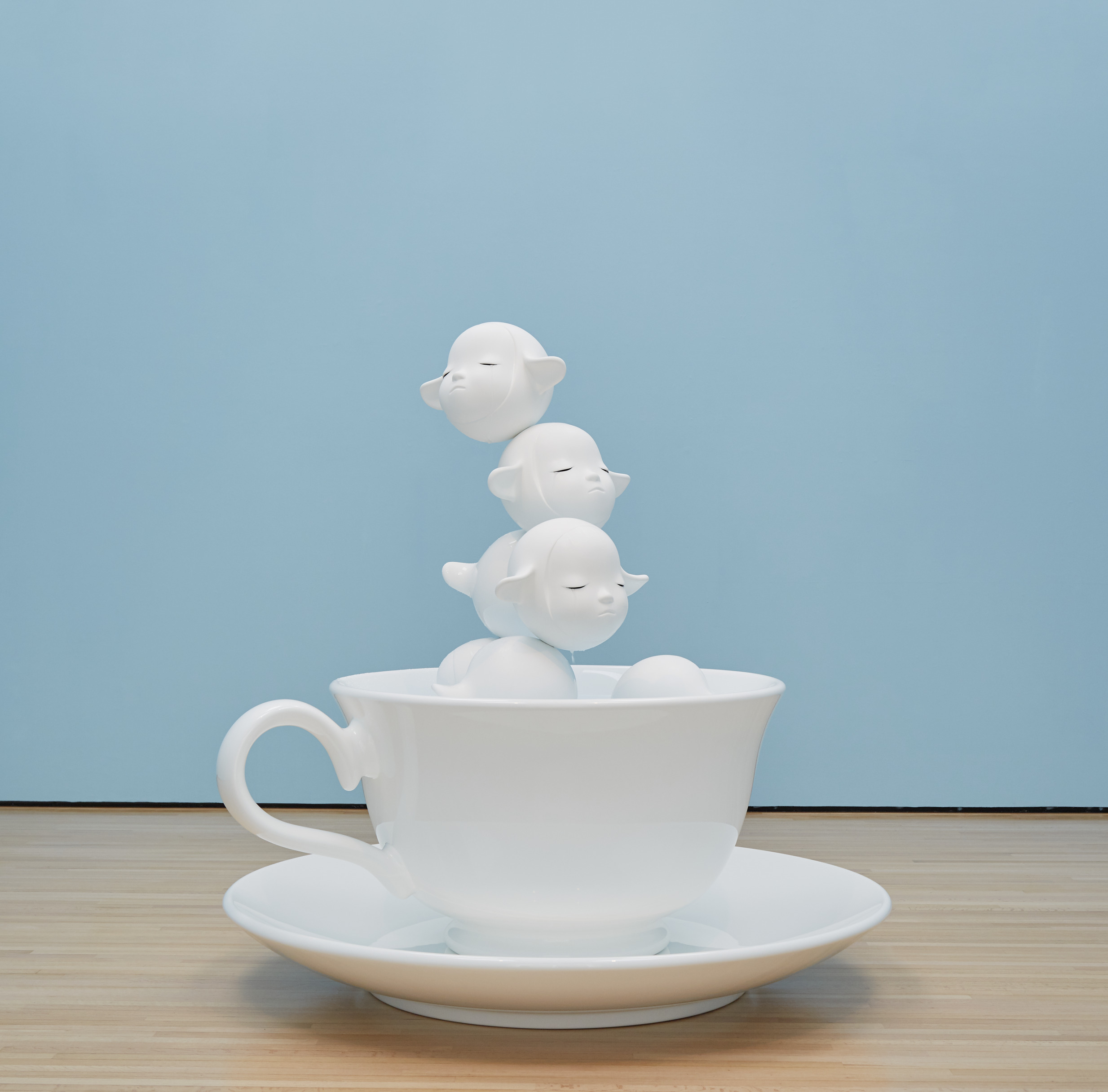
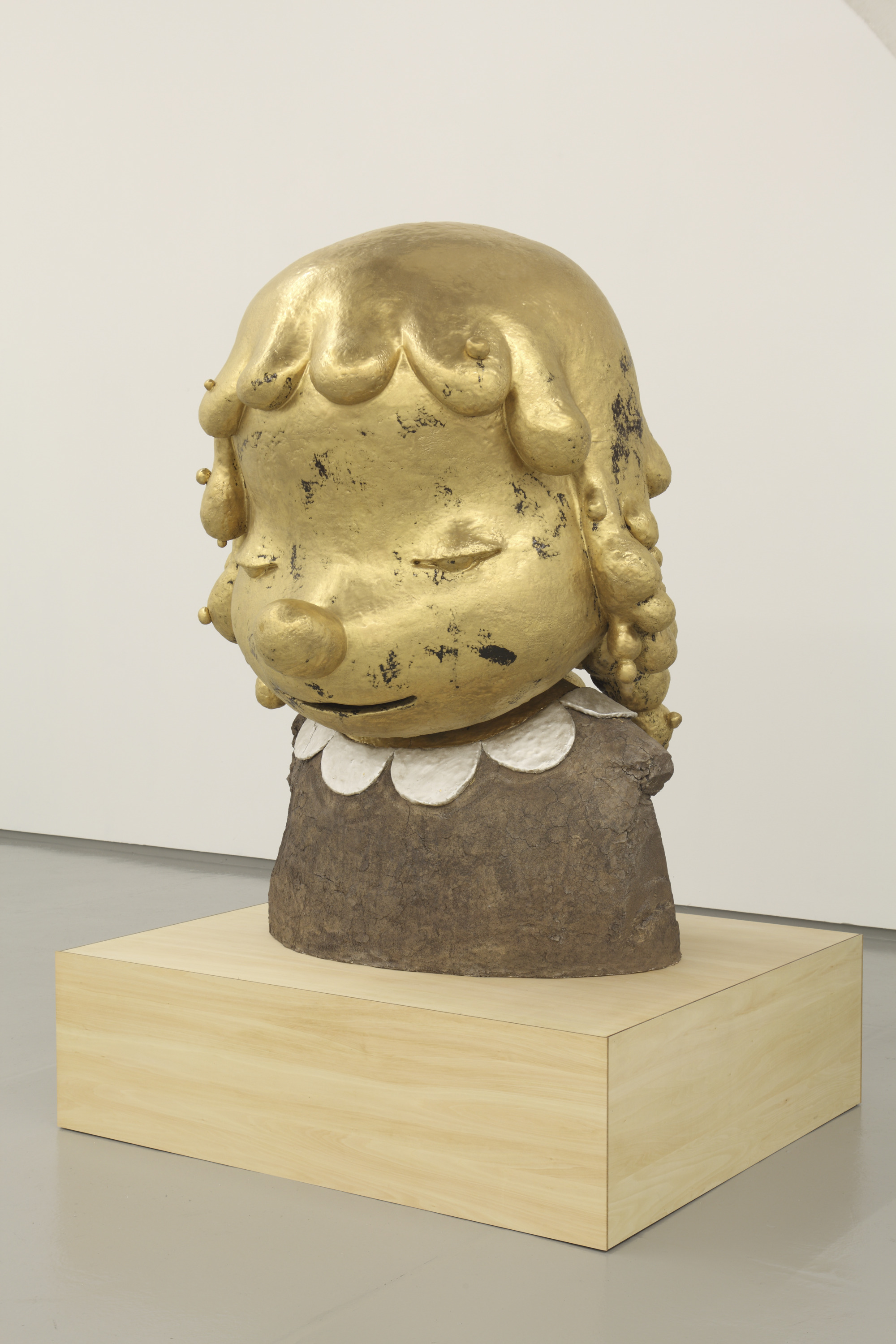
‘Yoshitomo Nara’ will be on display at the Guggenheim Bilbao Museum until 3 November 2024, and it’s set to travel to Baden-Baden’s Museum Frieder Burda and London’s Hayward Gallery next. For more information, visit guggenheim-bilbao.eus







